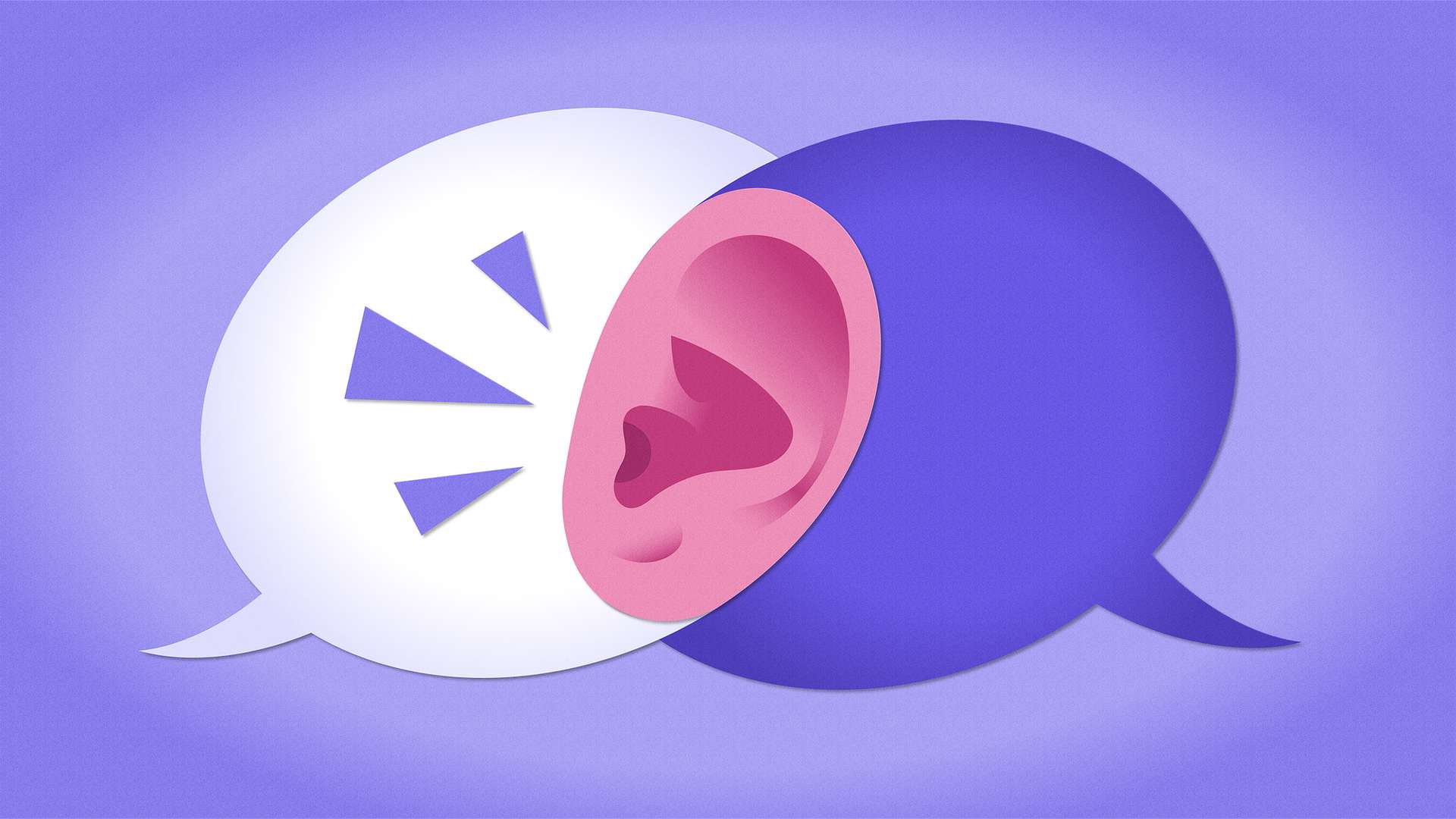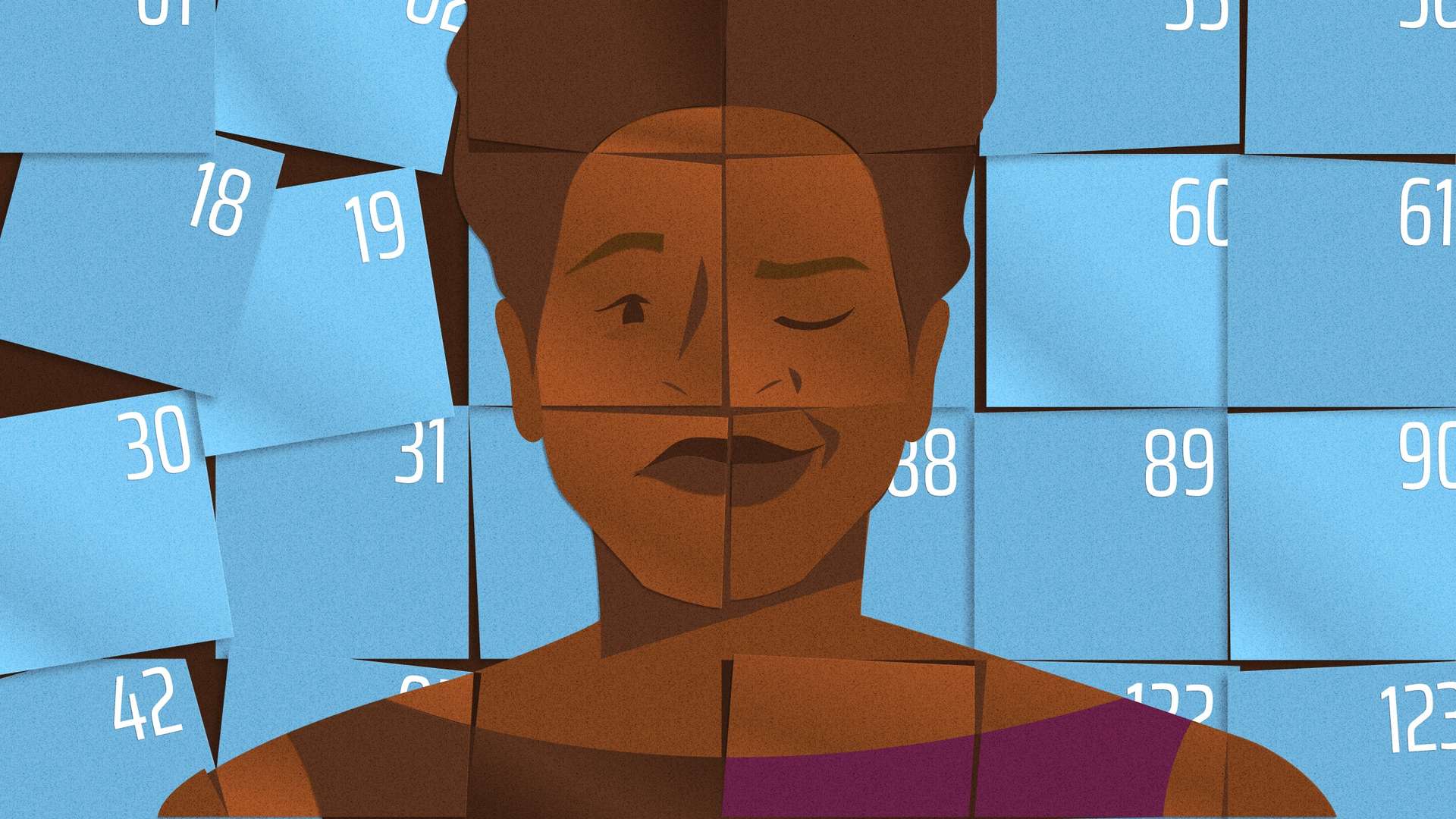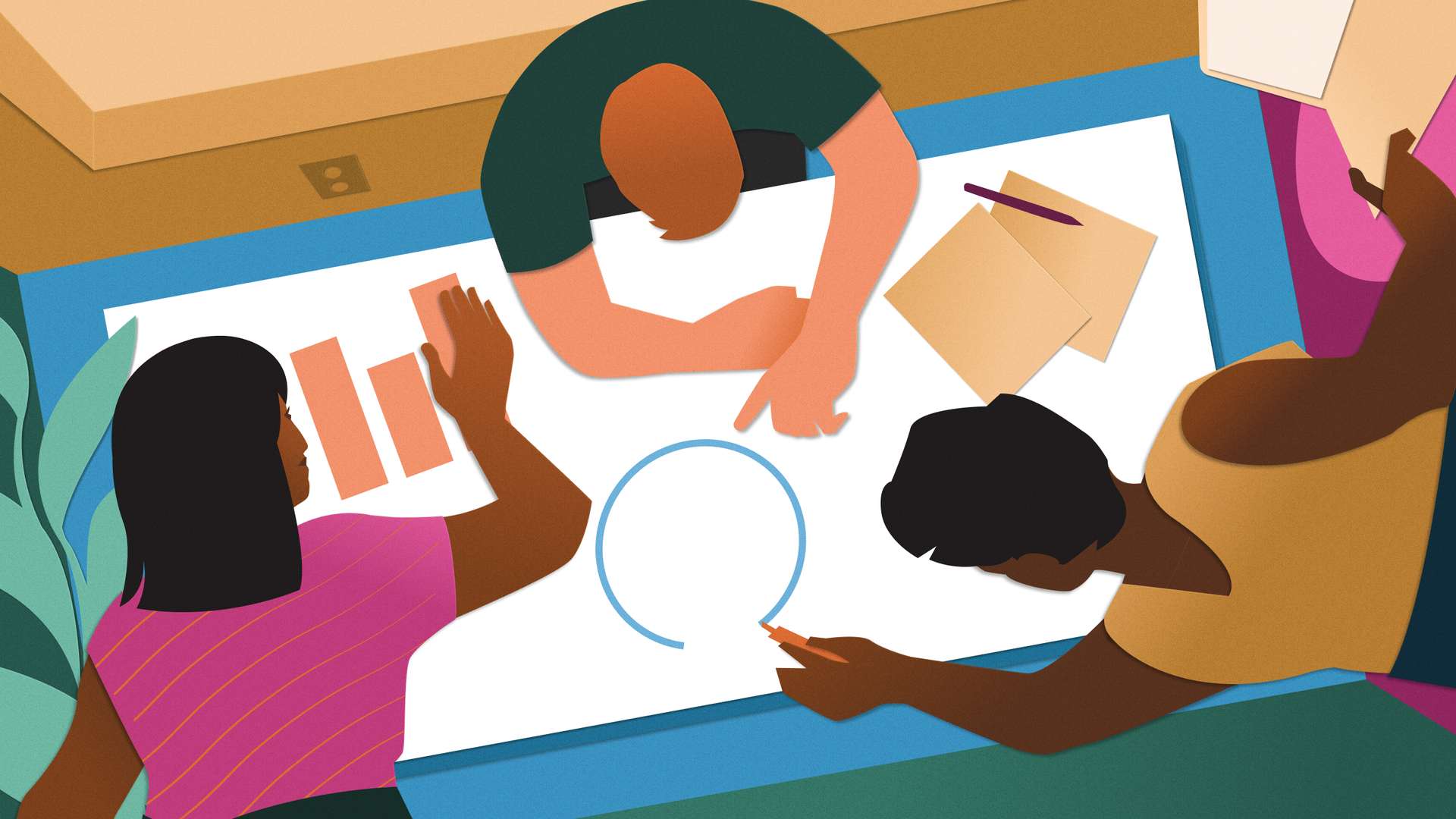I’m a talker. When I go to the grocery store, I chat with shoppers, stockers, and cashiers. We discuss all sorts of things—the freshness of the produce, which cookies are tastiest, what recipes we’ve been wanting to try. My inquisitive nature has always been an asset in my work as a UX researcher.
But until recently, I’d only conducted research in English with English speakers. So you can imagine how heartbroken I felt when my team assigned me to conduct a study with Spanish-dominant speakers in the United States searching for jobs. Sure I speak some Hebrew and French, but these skills wouldn’t help me do interviews in Spanish.
At the same time, most of my team’s discovery research had taken place in English. We had yet to serve people whose first language wasn’t English, which limited our understanding of our users’ mental models. I knew we needed to hire an external vendor to address this gap. We completed two studies and contracted two different companies that perform professional recruiting, written translations, Spanish-speaking moderating services, live translations, and reporting. While partnering with external parties, I learned many tips and tricks I want to share.
¿Listo? ¡Vamanos!
Prepare for the study
Let’s start by recognizing some big pieces of context. When it comes to resources, I get that hiring external teams for professional translation or other services might not always be possible. These tips aren’t meant to bypass the need for dedicated roles to translate and research in specific target languages. But I do want to encourage other researchers who enter into unfamiliar territory and offer them some tools that have worked well in my toolkit.
Another thing: Bias is always a critical consideration. UX research work strives toward objectivity and mitigating bias, but it matters that I am a white woman conducting research with Spanish-dominant speakers. Remember to acknowledge your background throughout and, when you can, invite folks with relevant lived experience to help inform your work. Setting this groundwork and revisiting the conversation often can help you navigate bilingual UX research and leverage these tips.
Set expectations
When hiring a vendor, be sure to clarify research goals and division of labor. Some vendor studies may be full service and thus, the researcher is largely hands off, while other research may require being more involved. Be sure to document roles and responsibilities for the project.
In my experience, the most successful collaboration involved vendors taking on recruitment, document translation, moderation, interpretation, and recordings. Vendors translate and implement documents most efficiently when they have resources created by an internal team. The vendor’s expertise is likely in the language itself, but the internal team knows the specifics of the project better than anyone.
Gather your core team
In addition to your participant, your study will require a minimum of three people: moderator, translator, and researcher. Meet with the moderator before the study to set study-specific goals. Some moderators may stick to the interview script, but others want to know if there is room to riff. Regardless, remind them of the importance of asking open ended and neutral questions to ensure findings are trustworthy. This may mean saying that you want participants to talk as much as possible.
But remember the needs of the participants, too. In one instance, we felt our moderator was cutting off participants, but she pushed back and explained some cultural norms of interrupting. In her opinion, some people who are Spanish-dominant speakers will keep talking until someone interjects. Later, we also asked her to explain acronyms and rephrase potentially confusing or unclear statements to gather quotes and video snippets later. She obliged of course. These experiences highlighted how important each team member and function is.
Prepare your materials
A few points to keep in mind as you plan for research in another language.
Ensure your consent form is in your respondents’ native tongue. Depending on your product, you’ll need customized participant agreements or Non-Disclosure Agreements (NDAs) to protect your users. Be sure to have them translated to the users’ preferred languages so they can read and understand the purpose of the study. In our case, we had proactively prepared Spanish NDAs because we knew that was the participants’ native language. Legally and ethically, it is vital to ensure users are informed. At Indeed we have localized NDAs in many languages as well as versions for different Spanish dialects and geographic regions.
Draft your plan, screener, and script in English yourself. Don’t be afraid to write your project documents in English. Since in-house researchers are most familiar with the product and testing parameters, it makes sense to use your expertise to craft these artifacts. Don’t worry about how the questions may sound in another language. Focus on the nuts and bolts of the study. The translation can come later.
Trust translations, but still verify them. After creating the artifacts, send the documents to the vendor for translation. Find out who will be doing the translation. Will the same person also moderate your interviews? Someone else? Remember that Spanish and other languages often have many dialects and regional differences, so it’s important to ensure your translator knows cultural nuances.
Even when the translation has been done professionally, consider asking a Spanish-speaking colleague to review the copy. They might catch missing or unclear portions, and they can verify that the quality of the translation meets your standards. Even if you don’t have someone who is both bilingual and qualified to run research sessions, you may have someone on the team who can at least double-check translations.
During one project, we noticed the translations were too formal. We wanted a conversational tone that would connect with the participants and represent our business accurately. If our Spanish-speaking coworker hadn’t taken a look, we would have missed this nuance entirely. I suggest setting up a shared working folder so you can modify documents, invite easy reviews, and request vendor edits if necessary.
Conduct the research
Many parts of mixed-language interviews are the same as working in your own language, but there are some extra things to consider.
Socialize! Publicize! Gather broader interest than you normally would
Partnering with relevant stakeholders in product, design, and UX is common, but many others can be valuable partners. If they’re available, ask the Latinx community group at your workplace to offer feedback, or simply advertise the research publicly. It’s essential to get as many eyes as possible on your work. You may find diverse audiences are interested in the research and how the study can be applied to other uses.
Use live translations on video calls
We used Zoom for all simultaneously translated interviews. Their features allow observers to either listen in the participants’ native tongue, or alter language audio to English, as long as there’s a simultaneous translator on board. Our vendor set this up for us, so it was easy to log on and listen—regardless of an observer’s language preferences. Some vendors set up video meetings that allow participants to know they’re being observed, and others opt for webinars which allow for anonymity. Consider which is best for your project.
Interpret the interpreter
While the moderator speaks with the participant, a translator will be doing real time interpretation for observers. This is a tough job and may result in brief lags or delays while the translator processes two languages. Remember to be empathetic to the participant, moderator, and translator. With that said, be sure to request that the interpreter mirror the tone of the participant. For instance if a user seems frustrated, ask that the translator repeat things like “Uh! Oh!” with feeling.
Pilot and debrief
A pilot session, or practice session, is a necessity! Have the vendor schedule one participant to do a dry run without any observers. Meet with the core team to see if adjustments should be made moving forward while there is still time to make changes such as adding, removing, or tweaking questions in future interviews.
Ask followup questions during live interviews
Generative research is meant for discovery. Keep in touch with your moderator via video chat, a Slack channel, or an instant chat thread so you can ask follow-up questions or ask them to clarify user statements. If additional stakeholders observe, have them filter their questions through you. This way, the moderator only has to communicate with one person and can focus on being present. Get on the same page by letting them know your goal isn’t to micromanage, but to partner to create rich findings.
After the study
It’s time to distill your results and turn your research into a story that stakeholders will understand. As you do, use the same inclusive approach that you’ve applied to the earlier stages of the project.
Get all versions of your interview records—and use them
Recording interviews falls under the vendor’s purview. However, once the videos are rendered, the vendor may transfer them to you in a shared online folder. Since the videos are available in both English and Spanish, be sure to specify that you would like both copies. The English video can be used for analysis, quotes, videos, and more. The Spanish version can be useful for native speakers. The same goes for written transcripts.
Take ownership of analysis
Once interviews have finished and videos have been shared, it’s time for analysis. Invite stakeholders far and wide to discuss salient themes, quotes, and observations. Consider holding an affinity mapping session. The more participants the merrier!
Draft the findings
After reviewing the data, it’s time to craft a report to share with stakeholders. In my experience, decks with images, quotes, videos, and relevant frameworks are more successful than long written documents because in addition to being aesthetically pleasing, they are easy to scan. Furthermore, they provide multiple ways of engaging audiences. Providing images and quotes relevant to both English and Spanish speakers may inspire attendees to take action and solve user pain points.
Present the results
Once your deck is done, it’s time to showcase the insights. I typically send a calendar invite to stakeholders with a message encouraging them to spread the word. When possible, I submit the information to relevant newsletters and Slack channels.
Also, as a researcher we represent the voice of our users. It can be easy to focus on the data, but presenting the research in the right context can really help mitigate bias. Consider inviting guest speakers to present relevant slides and speak from their own experiences if you can. Inviting a variety of voices to share findings can create a fuller picture at the end.
Just do the research
I encourage you: do the research, even if it’s not perfect. As UX researchers, we often work autonomously in our native tongue. We take pride in our knowledge of methodology, communication, interviewing, moderating, and writing skills. Yet, there are times when vendors are necessary to complete research that is out of our scope. Don’t let this be a deterrent. Discovery research is designed to be foundational. It’s messy. It’s complicated. Just start somewhere.





